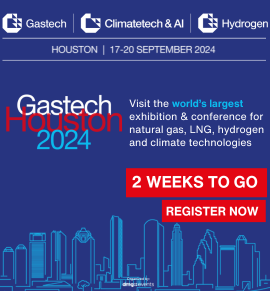January 22, 2024 [Hydrogen Insight]- The plant will produce an initial 500,000 tonnes a year, but could be scaled up to 100 million tonnes of annual capacity.
A subsidiary of Chinese auto company Geely has secured approvals for a green methanol project that could reach 100 million tonnes of annual production capacity, requiring about 20 million tonnes a year of green hydrogen, according to local reports.
Inner Mongolia Liquid Sunshine Energy Technology is due to start construction on a 500,000 tonnes-a-year plant drawing on wind and solar power in the autonomous region in July this year, with completion scheduled for mid-2026.
The subsidiary has also outlined plans to further scale up this annual production capacity to five million tonnes a year in a second phase and 100 million tonnes in the long term, although a timeline for such expansions have not been revealed.
The long-term target would be almost as much methanol as produced globally today — around 110 million tonnes per year thare are made almost entirely from fossil fuels.
The first phase of the Inner Mongolia project is set to cost 18.53 billion yuan ($2.6bn). While an exact electrolysis capacity for the facility is unknown, Hydrogen Insight estimates that producing the roughly 100,000 tonnes of hydrogen needed for 500,000 tonnes of green methanol would require at least 1GW of electrolysers.
Similarly, it is unknown whether the CO2 used in methanol production will come from from biogenic sources or industrial emitters.
Geely produces both passenger cars and trucks capable of running on methanol and in February last year opened the first 100,000-tonnes-a-year methanol facility in the world, sited in the northern Chinese city of Anyang. However, this project sourced its hydrogen from coal gasification, with CO2 feedstock captured from industrial processes.
Methanol-powered cars and trucks have remained marginal even in Geely’s home market, where the company estimates more than 30,000 vehicles are on the road. The fuel has half the energy content per gallon of gasoline while continuing to emit greenhouse gas emissions when combusted.
However, the chemical is also currently used as a feedstock for plastics and has started to make inroads as a marine fuel, with the first container ship capable of running on methanol launched last year.
All of the green methanol currently used to fuel ships is derived from biomass rather than renewable hydrogen due to a lack of available and cost-effective supply.
However, methanol’s long-term prospects are unclear. The IEA warned in its latest report on e-fuels that producing enough of the fuel to decarbonise even 10% of the shipping sector by 2030 — let alone other transport using methanol to reduce emissions — is likely to outstrip available biogenic CO2 supply.
Pro Trial: Access 13,300 Tank Terminal and Production Facilities
13,300 tank storage and production facilities as per the date of this article. Click on the button and register to get instant access to actionable tank storage industry data










